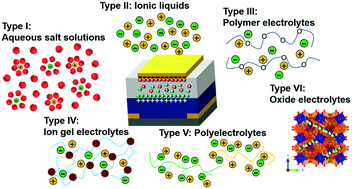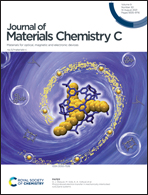Dielectric materials for electrolyte gated transistor applications
Abstract
In this review, we summarize the recent progress in developing dielectric materials for electrolyte gated transistors (EGTs). Semiconductors for EGTs have been extensively studied and reviewed since they dominate the key transport properties of these types of transistors. However, the electrolyte dielectric component of these devices is equally important since it provides ionic displacement dominating the device capacitance, driving voltage, and switching times, and determines how to integrate EGTs in/with other device components. Thus, the development of electrolyte dielectrics not only improves the EGT performance but also enables new features and opens up new possibilities for EGTs. Liquid electrolytes are more suitable for integration at the bio-interface and in sensing applications, while solid electrolytes can be printable and are compatible with circuit monolithic integration. Moreover, understanding the mechanism of electrolyte dielectric gating has also accelerated the expansion of emerging electrolyte-based electric double layer transistors (EDLTs) and electrochemical transistors (ECTs). In this review, we first discuss the structure and operation of EDLTs and ECTs, for the latter particularly those based on organic semiconductors (OECTs), since they are the major users of these materials. Next, different types of electrolyte dielectric materials are discussed, driven by relevant applications. We complete this paper with a summary and an outlook of this field.



 Please wait while we load your content...
Please wait while we load your content...